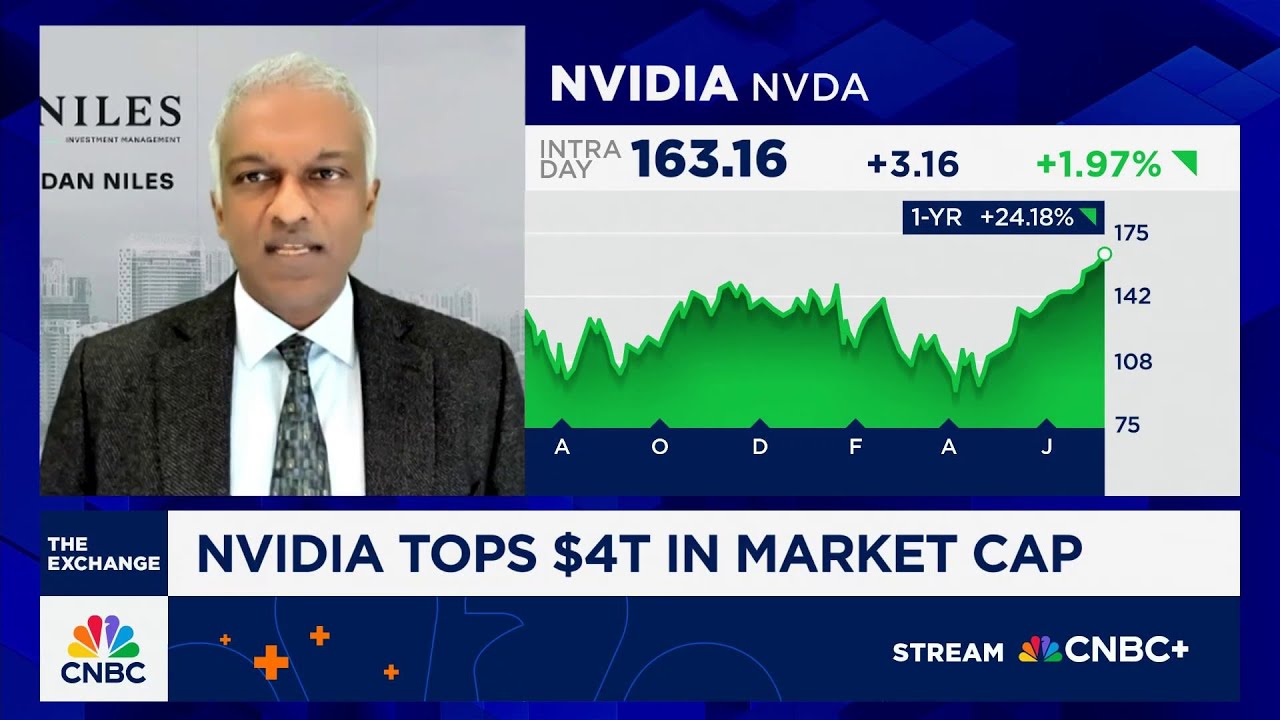Dan Niles remains bullish on Nvidia despite past challenges like export controls on China and a slowdown in AI training spending, viewing the recent $4.5 billion write-down as a positive de-risking event. He highlights the rapid growth in AI inference demand, driven by applications like ChatGPT, and believes Nvidia’s current valuation is justified given its strong fundamentals and favorable market dynamics.
Dan Niles, founder and portfolio manager at Niles Investment Management, remains bullish on Nvidia despite the stock’s significant rise from $1 trillion valuation two years ago to $4 trillion today. He explains that he typically does not short stocks that have strong consensus support unless he sees fundamental issues emerging. Last year, he identified potential problems in Nvidia’s business due to a slowdown in data availability for AI training, which impacted the company’s major customers—Microsoft, Amazon, and Google—leading to lowered revenue estimates and a nearly 50% drop in Nvidia’s stock price from its high.
A major challenge for Nvidia came with the export controls imposed on China, which led to a substantial $4.5 billion write-down in the first quarter. This write-down was initially expected to be even higher, around $5.5 billion, and caused analysts to reduce their revenue forecasts by excluding China from their models. However, Niles views this write-down as a positive development because it effectively de-risks Nvidia’s financial outlook by clarifying the impact of these geopolitical constraints.
Despite the slowdown in AI training spending, Niles highlights a significant shift toward increased inference spending, driven by the growing use of AI applications like ChatGPT and OpenAI’s Gemini. He notes that inference demand is accelerating rapidly, with Google reporting a 50-fold year-over-year increase in tokens generated in May, and Microsoft announcing a 5x increase in tokens generated since its early investment in OpenAI. This surge in inference usage supports Nvidia’s growth prospects.
Niles also points to broader geopolitical and market factors that have helped stabilize Nvidia’s outlook. For example, President Trump’s diplomatic efforts in the Middle East have led to new deals that may benefit the tech sector. These developments, combined with the de-risking from the China write-down and the strong inference demand, justify Nvidia’s current valuation multiple of around 40, which he considers reasonable compared to other major tech companies.
In summary, Dan Niles remains optimistic about Nvidia’s future due to the company’s ability to navigate export control challenges, the transition from AI training to inference spending, and the broader market dynamics supporting tech growth. He believes the stock’s valuation reflects these positive fundamentals and that Nvidia is well-positioned to continue benefiting from the expanding AI ecosystem.
